Clara Bow experienced a meteoric rise in Hollywood but then suffered an equally rapid decline at the age of just 25. Photo: Bettmann
When Taylor Swift released the track listing for her new album The Tortured Poets Department, the name at the bottom of the list sent Swifties rushing to investigate online. Who was this “Clara Bow”—and what was it about her colorful but notorious career that drew Swift's sympathy?
Swift has been teasing the album on social media in recent days, posting snippets of lyrics . Two lines in particular—“The crowd goes crazy at their fingertips/Crescent moon, Total eclipse”—are believed to be from Clara Bow. Apparently the theme is a sad/scary dive into the abyss of Tinseltown.
During the Jazz Age, no one was more famous or gossiped about than Clara Bow. When the silent era abruptly gave way to sound, she was the only Hollywood star to receive 8,000 fan letters a week. The top-grossing figure in America in 1928–29, she also ranked second in 1927 and 1930, despite being paid less than her peers. Just as her flame burned bright, it was brutally extinguished: at the ripe old age of 25, after a string of mostly fictitious sex scandals and humiliating court appearances, Paramount essentially disowned her.
Well, this overshadows any pun we were going to post. 🌚 #TSTTPD https://t.co/PTWtDQP87V pic.twitter.com/ZY6lauQtjf
— Taylor Nation (@taylornation13) April 8, 2024
This incarnation of the Gatsby-style flapper was the original “It” girl, a nickname borrowed from her 1927 hit of the same name. She inspired the cartoon character Betty Boop with her shy but sassy demeanor, eyes you could swim in, and a thick, squeaky New York accent. Madonna and Marilyn Monroe – in many ways her spiritual sister – both wanted to play a major role in her life story.
Cruelly enough, she was the main model for Lina Lamont, the shrill, ditzy starlet in Singin' in the Rain (1952), whose high-pitched vowels spell career doom the second she has to utter a line on set. This wasn't true in real life: Bow's flamboyant Brooklyn accent was never a problem in the right role, audiences even loved her singing, and with studio support she could have followed Joan Crawford, Carole Lombard and Garbo into a whole new phase. glory.
In the early days of Bow trying to make her name, this tiny 5ft 3in dervish was rejected at first sight by every casting agent she came across. “I was usually too fat,” she recalled years later. But every time she managed to get in front of the camera, everyone stopped and was surprised.
Under Close Spotlight: Clara Bow (1905 -1965), photographed around 1925. Photo: Michael Ochs Archives/Getty Images
Damien Chazelle's Babel (2022), an exposé of industrial-scale depravity in 1920s Los Angeles, borrows many tidbits from Bow's fabulous rise. Just as Margot Robbie's fun-loving Nellie was portrayed, Bow prevailed over a higher-billed actress, her flapper predecessor Colleen Moore, during the making of the lost comedy-drama Painted People (1924).
After refusing the close-ups she begged Moore to do, she went in for sinus surgery and returned in bandages, which halted production. Bow's amazing ability to cry on command, which surprised every director she worked with, was also used by Chazelle – including her response to one viewer about how easily she did it. “I’m thinking about home,” she replied simply.
Bow's meteoric rise depended on the arresting naturalism of her performances. Critics couldn't help but notice: she played an insignificant supporting role and still ran away with the entire film. Reviewing one of her first leading roles in The Plastic Age (1925), The New York Times captured some of her giddy appeal: “She has eyes that would turn any teenager away from his books […] and she knows how to use her eyes, shoulders and the rest of her tiny self in the most effective way. She exudes an elfin sensuality.” Whether it was Victor Fleming's The Trap (1926) or later It (1927), her star power created a sensation, guaranteeing lines around the block.
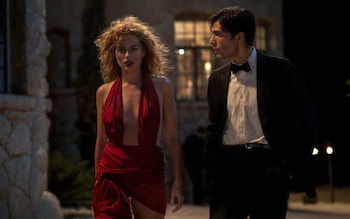 Margot Robbie's character Nellie Laroy in Babel is inspired by Clara Bow
Margot Robbie's character Nellie Laroy in Babel is inspired by Clara Bow
Although she didn't like the decorative role of a little girl in Wings (1927), the film was a technical milestone that everyone went to see, and not only was she the only name hot enough to put above the title, but there were several stills was caught on camera topless, which further enhanced her racy appeal. Paramount made money by keeping the Bow car ready for all four seasons of the year: say, “Winter Bow 1928” was announced long before the title, plot or other production details.
Babylon makes little attempt to describe the tumultuous ordeal of Bow's true life story, but at least it doesn't resort to grimly repeating the most salacious legends about her—those laid out by Kenneth Anger in his wildly speculative 1959 “A Hollywood Tale.” Babylon. The book's onion had sex in wild, drug-fueled orgies with the entire USC football team, including John Wayne, at a time when their fame was almost as great as hers. Such stories have been thoroughly refuted over the years by people such as Bowe biographer David Stenn and Karina Longworth, creator and host of the You Must Remember This podcast.
Bowe was certainly no retiring wallflower. Her tendency to juggle multiple male suitors (“Clara's beauties,” they quipped) during her rise to the top is something she wouldn't deny for a second—it's just that, unlike Gloria Swanson and Marion Davies of the time, she didn't make much effort to hide it all.
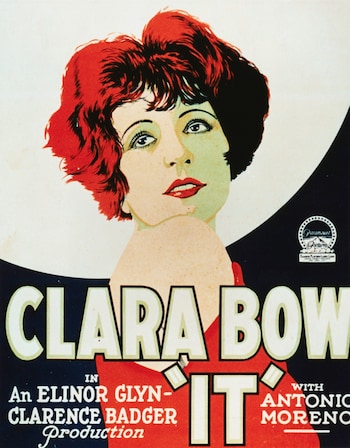 Delighted: poster for the highly successful 1927 romantic comedy ” It” Photo: Corbis Historical
Delighted: poster for the highly successful 1927 romantic comedy ” It” Photo: Corbis Historical
When her engagement to Fleming, who had taken her under his paternal wing, was abruptly broken off so she could have her way with dashing co-star Gary Cooper, everyone in town knew what was going on. Such was her lack of hypocrisy and deceit – she was just an ordinary girl from Brooklyn, not understanding the sanctimonious etiquette of the industry. She even rented a modest, run-down bungalow in the city center, foregoing the almost obligatory luxury that her level of fame might have required. No one gave her credit for the fact that in her tortured emotional life she had come a long way from the carefree, liberated “Jazz Babes” she played on screen to everyone's delight.
Born into a loveless marriage and Under dire circumstances, Clara was the third unwanted child her parents gave birth to, the previous two having died shortly after birth. This was not unusual in disease-ridden Brooklyn in 1905, where the infant mortality rate soared to a staggering 80 percent that 115°C summer.
Clara's very existence was unlikely, let alone that she could survive a terrible childhood and become the biggest movie star in the firmament. At age nine, she discovered her best friend Johnny burning alive in an apartment building fire and tried to wrap him in a rug to put out the fire. He died in her arms, screaming her name. Her beloved grandfather fell dead at her feet while swinging her on the home swing, leaving her largely in the care of her mother Sarah, who played tricks at home, locking Clara in a closet and telling her not to make a sound.
 Clara Bow (pictured circa 1928) inspired the cartoon character Betty Boop. Photo: John Kobal Foundation/Getty Images
Clara Bow (pictured circa 1928) inspired the cartoon character Betty Boop. Photo: John Kobal Foundation/Getty Images
Absent most of the time, her father Edward was a lecherous busboy who dreamed of singing; Sarah, who was hospitalized with psychosis and epilepsy in 1922, hated them both and insisted that Clara would be better off dead than to continue what she considered a debauched career in the performing arts. After winning a fortune contest in 1921 that paved the way for her first break, Clara faced a scene of domestic horror that is pure Piper Laurie in Carrie: waking up to the sight of her own mother coming at her with a butcher knife. . This would have traumatized her forever, as would the memories, discovered later in therapy, of her father abusing her.
With these extraordinary biographical details at hand, supported not only by biographies but also by the account that Bow herself gave to the journalist Adela Rogers St. Johns in 1928, it would have taken a special kind of malice to add so much obscene nonsense of a patently false nature. Much of it was retaliation and pure snobbery: she was an unrepentant wild child who invited a journalist named Grace Kingsley to dinner at the house she shared with her father in 1924, a memorable evening for Kingsley, mainly because she found herself caught trapped in the crossfire of a pasta fight.
Without making much effort to shake off this vulgar reputation, Bow was never considered stylish enough by the Hollywood crowd, who, as Babylon reveals, excluded her from their parties and then colluded with scandal newspapers in baseless gossip that completely exaggerated its degeneration. .
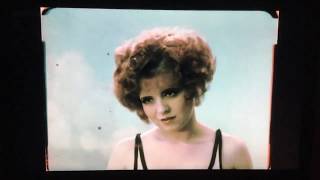
Long before Anger's field day, facts about Bowe's indiscreet private life, alien to the moral standards the industry wanted to impose, gave the press license to make distortions that would today be the subject of eight-figure libel payouts. In March 1931, the Coast Reporter published a shockingly unscrupulous “exposé” alleging that a drunken spree with a Mexican croupier and two prostitutes had resulted in two deaths and no remorse on Bowe's part; sex in public with her many lovers, copulation with her driver, her own cousin Billy Bow, several maids, a koala and Duke, her pet Great Dane.
Paramount, naturally, had to throw all its salary lawyers at this career-destroying mud. (Its author, Fredrik Girnau, was eventually sentenced to eight years in prison for writing it.) The studio, led by stingy production executive B.P. Schulberg had been filling their coffers with Bow's cheap hits a couple of years ago, while keeping her salary at a measly $1,500 a week—especially disappointing when compared to Colleen Moore's $125,000 per picture.
However, Bow's popularity had waned by this point. Instead of protecting this once valuable asset or nurturing her desire to be taken seriously, Schulberg simply grumbled about delays on the production line and tried to force her back to work. The quality of her scripts became consistently terrible – the idea being that Bow herself in flapper mode guaranteed a healthy crowd, so why write anything decent or more dramatic for her?
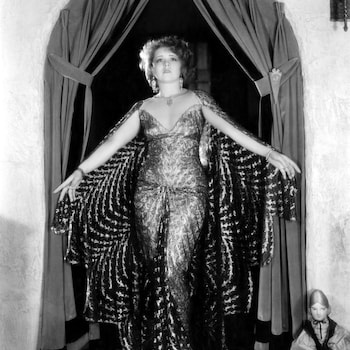 Clara Bow in 1929. Photo: Sunset Boulevard/Corbis, Getty Images
Clara Bow in 1929. Photo: Sunset Boulevard/Corbis, Getty Images
Rising stars such as Jean Harlow and Sylvia Sidney were waiting in the wings and were helped with better material, while Bow always had to mix up whatever was given to her. When the shame of having so much dirty laundry aired—and so much invented—caused a nervous breakdown, Schulberg contemplated terminating her contract, thereby saving the studio a $60,000 payout, and showed her the door.
Fox had two final talkies awaiting him before The Code – the critically acclaimed comeback Call Her Wild (1932) and the circus drama Hoop-La (1933), directed by Frank Lloyd, the friendly force which helped discover her in The Black Bulls (1923). .
Alas, however, Bowe's fame was irrevocably damaged, and she left the screen forever, entering into a difficult marriage with Republican politician Rex Bell. The long stay in the sanatorium was an attempt to understand her mental illness, which was diagnosed as schizophrenia: the traumas of her childhood and the enormous pressure associated with becoming a teenage sex symbol took their toll.
But so too was the resentment and contempt of those charged with managing her career, who exploited her ebullient vitality as they would have done with Monroe, without any basis for professional respect. In a city that preferred to operate like a tight network of family businesses, this dazzling nobody, adored by the public until they were taught to treat her as an outcast, was the antithesis of the nepo child.
Fox's last two pre-Code sound films awaited her – the critically acclaimed comeback Call Her Wild (1932) and the circus drama Hoop-La (1933), directed by Frank Lloyd, the friendly force that had helped discover her in The Blacks. bulls” (1923). .
However, alas, Bow's fame was irrevocably damaged, and she left the screen forever, entering into a difficult marriage with Republican politician Rex Bell. The long stay in the sanatorium was an attempt to understand her mental illness, which was diagnosed as schizophrenia: the traumas of her childhood and the enormous pressure associated with the fact that she became a teenage sex symbol took their toll.
However, the same the same could be said of the resentment and contempt of those entrusted with managing her career, who exploited her ebullient vitality as they would have done with Monroe, without any basis for professional respect. In a city that preferred to operate like a tight network of family businesses, this dazzling nobody, adored by the public until they were taught to treat her as an outcast, was the very opposite of an unpopular child.



































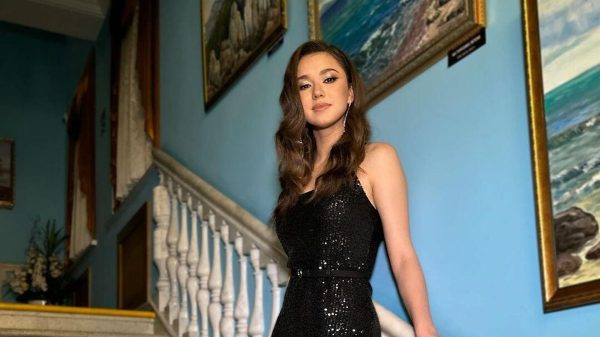






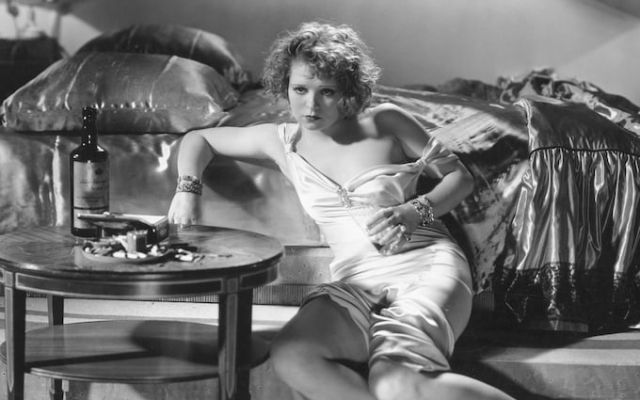


















Recent Comments